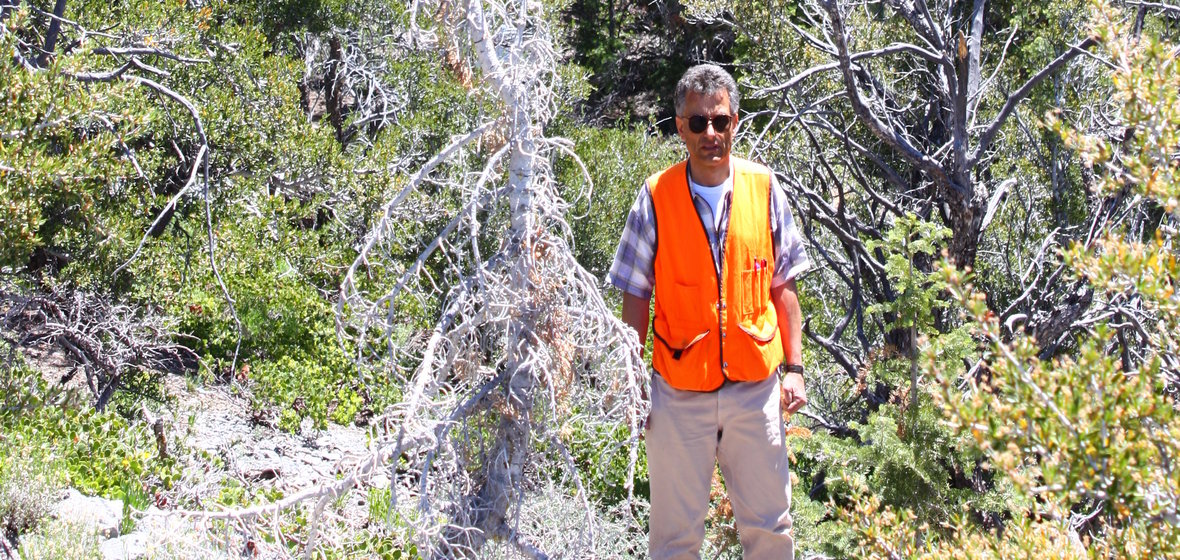Franco Biondi's DendroLab research contributes to understanding how long trees can survive during drought.
Biondi, professor of natural resources and environmental sciences in the College of Agriculture, Biotechnology and Natural Resources, studies the vascular system of trees; specifically, how trees transport water from the ground to the atmosphere. A recent study in which he participated looked at what happens when the capillary forces within the vascular system are broken or strained during drought.
{{RelatedPrograms}}
When that constant flow of water through the conduit, or vascular, system is broken, during drought for instance, the tree can start to die because no water is feeding its canopy.
"We study how much stress drought causes to the vascular system of trees by placing instruments on the trees themselves to understand how they expand and contract; and how water and other environmental factors affect that pulsing," Biondi said.
Much of Biondi's field work is conducted in Nevada to gain a better understanding of local trees' reaction to drought. Those findings are then provided to larger global studies.
For his intellectual contribution on how trees respond to drought, Biondi is a co-author in a new study on drought recovery in the science journal Nature.
As global temperatures continue to rise, 21st century droughts will become more frequent in many regions. In the study, scientists found that post-drought recovery of land ecosystems has taken progressively longer over the course of the 20th century. The paper, led by Woods Hole Research Center's Christopher Schwalm, shows that in some areas an incomplete state of recovery may become the new normal over the rest of the century, which may result in tree mortality and increased emissions of greenhouse gases.
Using remote sensing, geostatistical scaling of in situ data, and Earth system modeling approaches, a team of scientists measured recovery time following droughts in various regions of the world.
While they noted that, "across many regions more frequent and severe droughts are expected in the 21st century," the researchers found that drought recovery times in two regions of the climate system, the tropics and the northern high latitudes, were longer than in other regions. Whereas the tropics are high in precipitation and biodiversity, the northern regions are low in biodiversity and rainfall. More generally, the longest recovery times tend to cluster in either very high or very low productivity regions.
The study's authors concluded that under business-as-usual emissions of greenhouse gases, time between drought events will likely become shorter than time needed for recovery.
They argue that recovery time is a crucial "metric for assessing ecosystem resilience, as this time scale shapes the odds of crossing a ‘tipping point,'" which for drought is associated with tree mortality. A shorter time between droughts combined with longer recovery times means potential widespread degradation of the land carbon sink.
"This work clearly highlights the need to obtain more detailed information on how the vascular system of trees will cope with future droughts," said Biondi.
Woods Hole Research Center contributed to this story.











